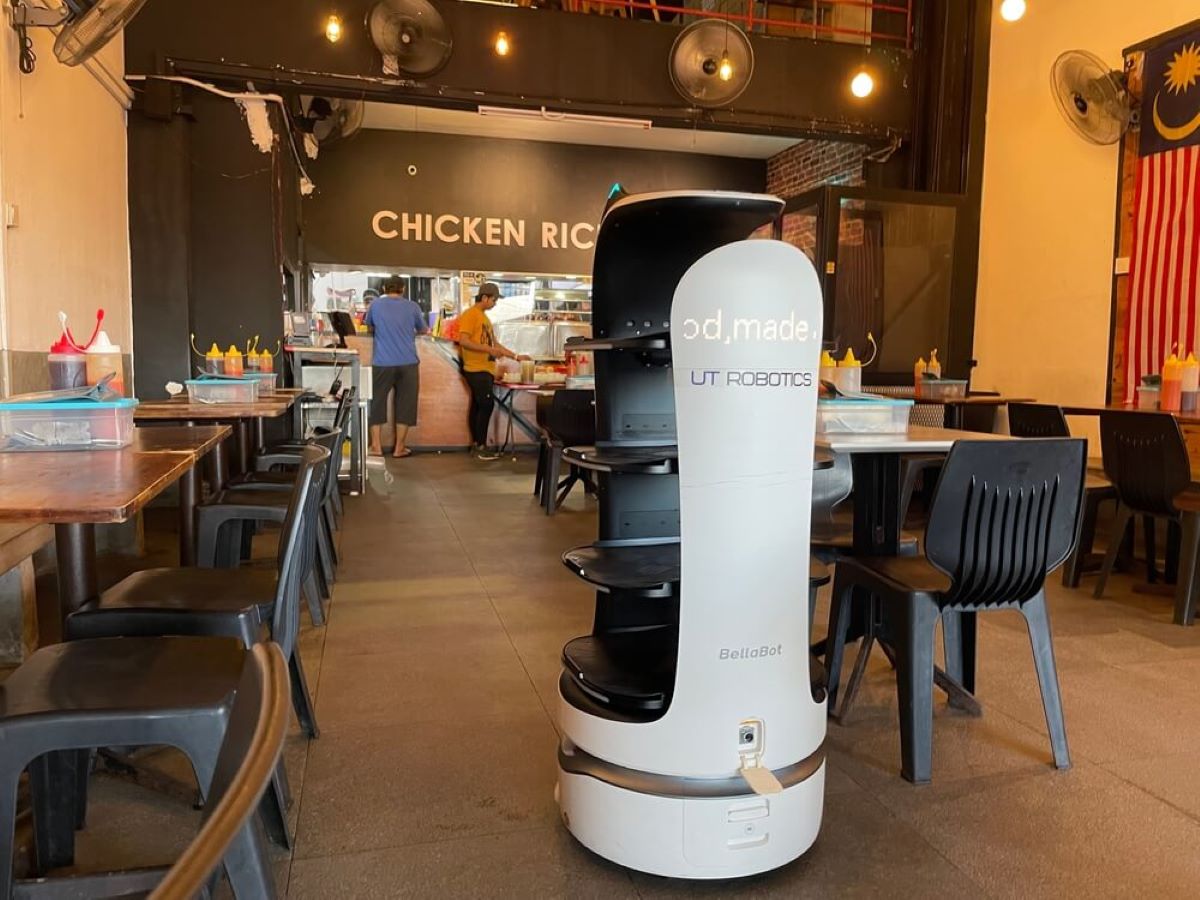Today, you could walk inside a restaurant, be greeted and seated by a robot host or hostess, and find multiple touchscreens available for you to enter your selection, as robo-servers stand ready to service you.
This will likely not replace human-centered personalized service of 4- or 5-star restaurants any time soon, but it is already booming for cafes and fast-food or quick-service restaurants (QSR) around the globe, including the GCC, particularly in the UAE and Saudi.
Giant robotic machines that act as waiters or chefs, and humanoid hosts are expensive and sometimes difficult to install, and employees that survive robot-era pink slips will need to be trained on the new systems.
Despite that, restaurants are finding robot-served meals too appetizing to ignore.
Read: Cloud and robotics as a service: The ultimate business game
Robot restaurant market growth
US robot restaurant proliferation is huge. California-based Bear Robotics introduced its Servi robot in 2021 and expects to have 10,000 deployed by the end of this year in 44 US states and overseas. Shenzen, China-based Pudu Robotics, which was founded in 2016, has deployed more than 56,000 robots worldwide.
“Every restaurant chain is looking toward as much automation as possible,” said Phil Zheng of Richtech Robotics. “People are going to see these everywhere in the next year or two.”
According to Zion Market Research, demand for Global Hospitality Robots resulted in revenues valued at around $300 million in 2022 and is estimated to grow about $3.1 billion by 2030, or 25.51% yearly between 2023 and 2030.
Restaurant staffing
Staffing has become one of the main challenges facing restaurants since the COVID pandemic. Global restaurant consultants Aaron Allen & Associates stated that up to 82% of restaurant positions in the fast-food industry could be replaced by robots, for savings of up to $12 billion in annual wages.
A robotic server or food runner is a machine that delivers food to diners and in most cases, busses tables while being assisted by a human to help transfer old dishes onto the robot, but these machines don’t accept direct orders like waiters do.
These robots also perform an essential marketing function today as fascinated diners snap photos of the machines and share the images on social media, helping promote the restaurant free of charge.
These smart mechanical devices can handle a number of customer-facing labor duties and replace staff shortages but can also be present in key production areas like the kitchen, or storage spaces.

Benefits of automated restaurants
Automated systems in restaurants can perform human tasks 24/7 without needing to take a break, have a day off, and be free from social distractions like financial or family troubles.
While a robot costs around a one-time fee of say $15,000, the people it replaces cost no less than $5,000 to $6,000 per month. A digitally optimized QSR is faster and 2/5th of QSR customers rank speed of service as the most important aspect of a fast food outlet. Labor costs account for nearly 40% of QSR spending, hiring, and retention. Robots in restaurants also make the food industry safer from a hygiene and infection perspective.
Just a Gimmick?
Are robot waiters and cooks merely a publicity stunt with little possibility of replacing humans when it comes to traditional food services? Certainly, they face challenges. As mentioned earlier, these restaurant robots, in most cases, can’t take food orders. We’re not sure about the level of smart sensors needed for them to avoid obstacles or topographic challenges like stairs, steps, and wild kids running around everywhere.
Chili’s restaurant which had a robot server named Rita in 2020 and implemented that experience in over 60 US restaurants, abandoned the experiment last August. The chain found that Rita got in the way of human servers and the majority of guests there said the bot didn’t improve their overall experience. Perhaps it was the hybrid approach or the type of robot used that failed to impress customers or owners, but these are still very early times to make fully informed decisions on the viability of this technology in food service.
Use cases for the UAE
Americana Restaurants which works with Pizza Hut, KFC, and Hardees, among others, across the MENA, are together with Miso Robotics testing Flippy 2, a robotic arm, to check its machine learning and AI skills. The robot arm will be installed at the Wimpy restaurant in Dubai Mall alowing it to swiftly cook a menu of food choices.
RoboCafe, a cafe run entirely by a staff of robots will be located in Dubai Festival City, and will see customers place orders like wraps, pastries, sandwiches, coffee, and other drinks via iPads, and ensure delivery in a span of only minutes at respective seatings where orders are made.
The cafe will be operated by three robotic arms that “will also perform light and musical shows to entertain guests”.
Also, Donna Cyber Café, which is planning to open in Dubai in 2023, will become the city’s ‘first supermodel robot café’.
Saudi Asian food robot restaurant
Jazan’s City Center Restaurant ‘hired’ six robot assistants to deliver trays of Asian food to customers, with the idea first originating to help reduce the spread of the corona epidemic during COVID.
These robots can sense any movement near them so they can stop walking or even change paths.
For more on technology news, click here.








